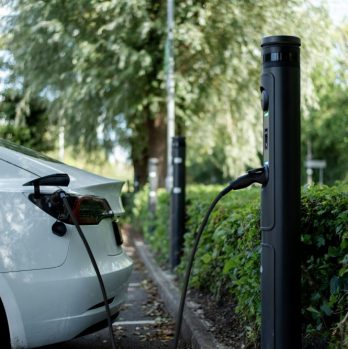Tesla Models: A Comprehensive Guide to the Revolutionary Electric Cars

Introduction:
With their cutting-edge technology and sleek designs, Tesla cars have taken the automotive industry by storm. In this article, we will provide a thorough overview of Tesla models, exploring their features, types, popularity, and historical evolution. We will also delve into quantitative measurements, highlighting the performance metrics of these innovative vehicles. Additionally, we will compare and contrast different Tesla models, discussing their distinctions and examining the advantages and disadvantages of each. Finally, we will analyze the crucial factors that drive car enthusiasts to choose Tesla as their preferred brand.
Overview of Tesla Models:

Tesla models represent a paradigm shift in the automotive industry, offering fully electric vehicles that are both environmentally friendly and high-performing. Developed by Tesla, Inc., these cars utilize advanced technologies, including regenerative braking, autopilot capabilities, and over-the-air software updates. Tesla currently offers three main models: the Model S, Model 3, and Model X. Each model caters to different consumer needs and preferences, providing various sizes, features, and price points.
Model S: The Flagship Sedan
The Tesla Model S is the company’s flagship sedan model, renowned for its luxurious design, impressive range, and stellar performance. Equipped with dual electric motors, the Model S delivers instant acceleration and offers an exceptional driving experience. Its spacious interior, cutting-edge infotainment system, and advanced safety features make it a popular choice among luxury car buyers.
Model 3: The Affordable and Versatile Option
The Tesla Model 3 is designed as a more affordable and accessible electric car, targeting a wider consumer base. Combining sleek aesthetics, long-range capabilities, and state-of-the-art technology, the Model 3 has gained immense popularity since its release. Its compact size and competitive pricing make it an attractive option for urban commuting, while still providing ample cargo space and impressive performance.
Model X: The Luxury SUV
The Tesla Model X represents the brand’s foray into the SUV market, combining the benefits of an electric vehicle with the versatility and spaciousness of an SUV. The Model X features eye-catching falcon-wing doors, an expansive panoramic windshield, and a futuristic interior. With its impressive range, towing capabilities, and advanced safety features, the Model X has become a preferred choice for those seeking a luxury electric SUV.
Quantitative Measurements of Tesla Models:
When evaluating Tesla models, important quantitative measurements come into play. These metrics include the range in miles per charge, acceleration in seconds from 0 to 60 mph, and top speed. For instance, the Model S Long Range Plus boasts a range of over 370 miles, accelerates from 0 to 60 mph in just 3.7 seconds, and has a top speed of 155 mph. These impressive figures highlight the prowess of Tesla models and their ability to compete with traditional combustion-engine vehicles.
Differences Among Tesla Models:
While all Tesla models share the brand’s distinctive electric DNA, they do differ in key aspects. The Model S caters to those seeking luxury and performance, offering a spacious interior and a choice of multiple powertrain options. On the other hand, the Model 3 focuses on affordability and usability, featuring a minimalist design and a more compact size. The Model X, with its SUV body style, prioritizes versatility and practicality, ideal for families and adventurers.
Historical Overview of Pros and Cons:
Over the years, Tesla models have undergone several improvements, with each iteration addressing certain pros and cons. Historically, some advantages of Tesla models include zero emissions, lower cost of operation, and access to a rapidly growing Supercharger network. However, challenges such as limited charging infrastructure, higher upfront costs, and concerns over battery degradation have also been associated with these cars. Tesla has made significant strides in overcoming these obstacles, continuously refining their models and addressing consumer concerns.
Crucial Decision Factors for Car Enthusiasts:
When it comes to purchasing a Tesla, car enthusiasts weigh several factors. Firstly, the range of the vehicle plays a pivotal role, as it determines the car’s usability for long trips. Performance metrics, such as acceleration and top speed, are also crucial for those seeking a thrilling driving experience. Tesla’s autopilot features, safety ratings, and over-the-air software updates are additional benefits that hold considerable weight. Additionally, factors like price, design aesthetics, and the availability of tax incentives influence the decision-making process.
Conclusion:
Tesla models have revolutionized the automotive industry, offering electric vehicles that combine sustainability, advanced technology, and exceptional performance. The Model S, Model 3, and Model X cater to different consumer needs, and each boasts its unique strengths. Quantitative measurements further emphasize the impressive capabilities of Tesla models. As the brand continues to refine its offerings, addressing historical challenges and pushing the boundaries of electric vehicles, car enthusiasts are presented with an array of choices that provide both luxury and sustainability.











